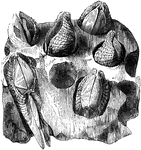Clipart tagged: ‘burrow’

Armadillo - Endoskeleton and Exoskeleton or Dermoskeleton
An illustration of a pichiciago, a small burrowing armadillo. The front half of the animal is covered…

Deathwatch Beetles
"Other species, which also bore into timber in their larva state, are well known by the name of Death-watch…

Typograhic Beetle
"The typographic beetle recieves it's name... from the circumstance that the burrows formed by it in…

Land Crab
The land crab is a member of the family 'Gecarcinidae', and is remarkable for the curious modification…
!["Like that animal [the mole] it is constantly engaged in burrowing in the earth; and to enable it to do this with facility iits anterior limbs are converted into a pair of flat, fossorial organs, which are turned outward in exactly the same manner as the hand of the mole. In its pasage through the earth it does great injury to the roots of plants, but it said to live quite as much upon animal as vegetable food." — Goodrich, 1859](https://etc.usf.edu/clipart/14900/14935/molecricket_14935_mth.gif)
Mole Cricket
"Like that animal [the mole] it is constantly engaged in burrowing in the earth; and to enable it to…

Original Gold Mining Device
Gold mining consists of the processes and techniques employed in the removal of gold from the ground.…
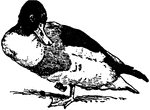
Sheldrake Duck
"The sheldrake, also known as the bargander or burrow-duck, is a member of the duck family, which is…
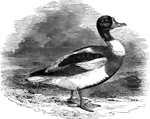
Common Sheldrake Duck
Also known as the burrow-duck and the sly goose, the common European sheldrake has been known to make…

Mining Machine
A trommel is a screened cylinder used to separate materials by size, separating the biodegradable fraction…

Mole
Moles are the majority of the members of the mammal family Talpidae in the order Soricomorpha. Although…

Thirteen-Lined Spermophile, Also Called a Federation Squirrel
Spermophilus tridecemlineatus. Illustration of the most common of the Spermophilinae. "...having a number…
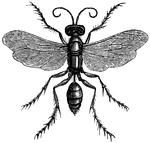
Spider Huntress Wasp
Chalybion caeruleum. "A family of fossorial hymenopters, or digger wasps. The prothorax is narrowed…
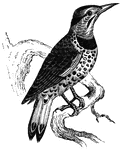
Golden-Winged Woodpecker
The golden-winged woodpecker is known for burrowing its own holes into live trees to use as a nest.
